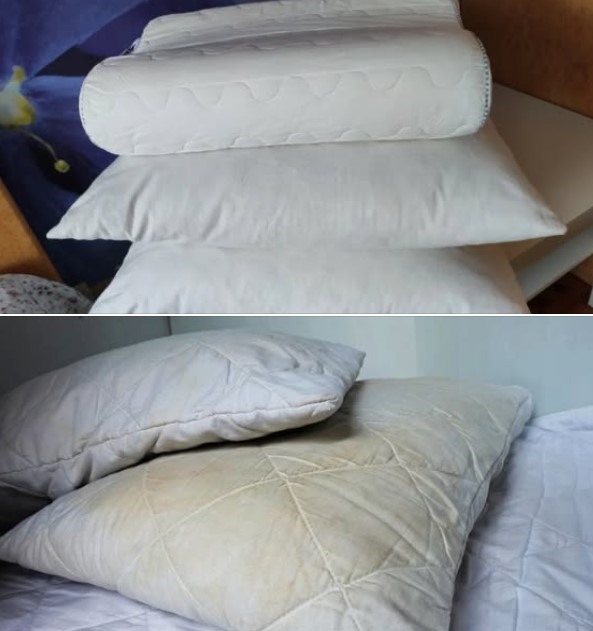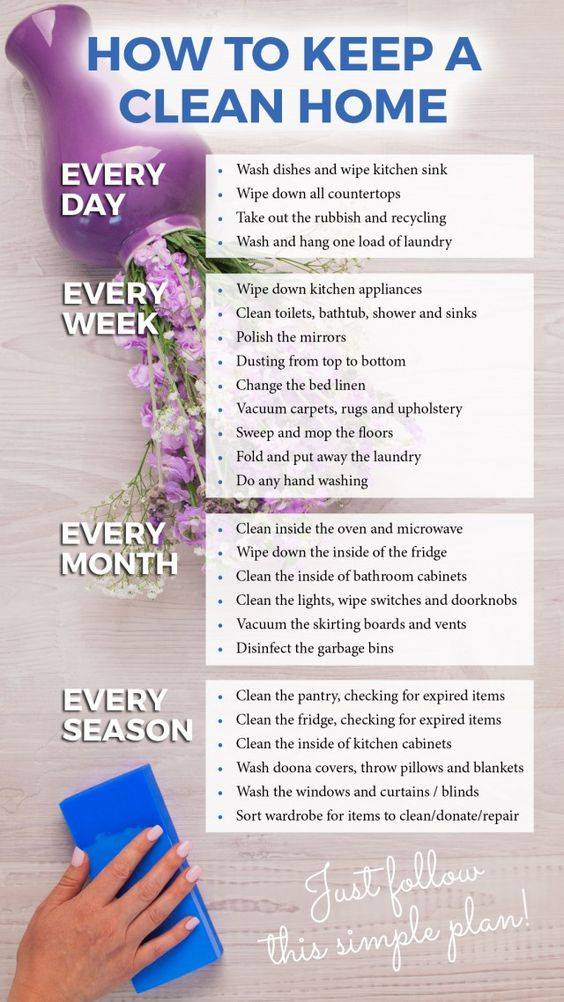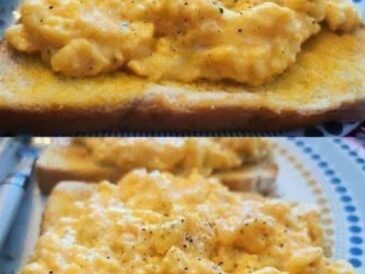It’s a frustrating feeling to see the once pristine pillows turning yellow, covered in dust, dirt, and body oils. Pillows are not just for comfort—they are essential to ensure a good night’s sleep. But when they become stained and dirty, the thought of tossing them away can seem wasteful. And buying new pillows every time just doesn’t feel practical. Luckily, there are effective ways to clean your pillows and keep them in good condition for a longer time. Whether your pillows are filled with down, synthetic fibers, or orthopedic material, there are cleaning methods that can bring them back to life and ensure they stay fresh.
Understanding the Issue: Why Do Pillows Get Yellow?
The yellowing of pillows is often a result of sweat, body oils, saliva, dust, and other environmental factors. Over time, these residues accumulate and cause unsightly yellow stains that not only diminish the look of the pillows but also compromise their hygiene. Unfortunately, regular pillowcases can’t fully protect the pillow from this buildup. These stains may occur regardless of how often you change the pillowcase. Additionally, dust mites and allergens may thrive inside the pillow, leading to further hygiene concerns.
In addition to yellowing, pillows can also become a haven for dust and bacteria, which is why regular cleaning is essential. Regular washing not only helps to keep your pillow clean but also reduces the risk of allergies and ensures your pillows stay comfortable for sleeping.
How to Properly Wash a Pillow
Washing pillows may seem like a daunting task, especially since not all pillows are machine washable. However, with the right methods and materials, cleaning your pillow is easier than you might think. Here are three proven techniques to wash yellowed pillows and restore them to their original state.
1. Hot Water with Lemon
Lemon is a natural bleaching agent that has been used for centuries for its disinfecting and whitening properties. This method is ideal for pillows that have yellow stains caused by sweat and body oils. Lemons can effectively lift stains while leaving your pillows smelling fresh. Here’s how to use lemon for cleaning:
Ingredients Needed:
- 2.5 liters of water
- 6 cups of fresh lemon juice
Steps:
- Boil 2.5 liters of water and add 6 cups of fresh lemon juice.
- Soak the pillow in the hot lemon-water solution for about two hours.
- After soaking, wash the pillow with soap and warm water to remove stains.
- Rinse the pillow thoroughly to remove any lemon residue.
- Allow the pillow to air dry completely in a well-ventilated area.
Lemon’s natural acidity helps break down oils and grime, leaving your pillow refreshed and cleaner. For a more effective result, make sure to use fresh lemon juice, as it is more potent than bottled varieties.
2. White Vinegar and Baking Soda
Another highly effective combination for cleaning yellowed pillows is the use of white vinegar and baking soda. This pair not only works as a gentle scrub but also disinfects, deodorizes, and brightens fabric. Both ingredients are natural, safe, and highly effective in breaking down dirt, oils, and grime that may have accumulated in your pillow over time.
Ingredients Needed:
- 1/2 cup of white vinegar
- 1/2 cup of baking soda
- Hot water
Steps:
- Place the pillow in a large basin or bathtub filled with hot water.
- Add the white vinegar and baking soda to the water.
- Let the pillow soak in the solution for one hour.
- After soaking, run the pillow through a normal washing cycle in your washing machine using your regular laundry detergent.
- Dry the pillow by air drying or using the dryer, ensuring it’s fully dry to prevent mold and bacteria from developing.
This method is excellent for removing the dirt, oil, and sweat that accumulate in pillows. Additionally, the deodorizing power of baking soda leaves your pillow smelling fresh and clean. The vinegar will also help break down stubborn stains that have set over time.
3. Lemon and Hydrogen Peroxide
For a deeper cleaning, lemon juice combined with hydrogen peroxide is a powerful natural alternative to bleach. Hydrogen peroxide, or oxygenated water, is effective at lifting stubborn stains and killing bacteria that might be hiding in the fibers of your pillow.
Ingredients Needed:
- 1/2 cup of lemon juice
- 1 cup of hydrogen peroxide
- Hot water
Steps:
- Prepare a large bucket of hot water and add the lemon juice and hydrogen peroxide.
- Place the yellowed pillow in the mixture and let it soak for about an hour.
- After soaking, rinse the pillow thoroughly under cool water to remove the cleaning solution.
- Wash the pillow in the washing machine with your regular detergent and air dry or use the dryer.
This solution works particularly well for pillows that have heavy staining from sweat or body oils, as the hydrogen peroxide is known for its strong stain-fighting properties. Additionally, the lemon juice brightens the pillow and gives it a refreshing scent.
How to Maintain Clean Pillows
Now that you’ve cleaned your pillows, it’s essential to know how to maintain them to prevent future stains and yellowing. Here are a few helpful tips to keep your pillows in pristine condition:
1. Regular Washing: Washing your pillows twice a year is ideal. However, if they are heavily soiled, you can wash them more frequently. Washing pillows too often can cause them to lose their shape, so try to maintain a balance.
2. Drying Properly: Pillows should always be thoroughly dried to prevent mold and mildew growth. When drying pillows in the dryer, make sure to add a couple of clean tennis balls to fluff them up. If you’re air-drying them, choose a warm, dry day, and place them outside on a clothesline.
3. Protecting Your Pillows: Consider using pillow protectors or removable pillowcases made of breathable fabric. These can help prevent the accumulation of oils, sweat, and dust. You can also consider using pillow protectors that are hypoallergenic to prevent dust mites and other allergens from accumulating.
4. Fluffing Your Pillows: Regularly fluffing your pillows helps to redistribute the filling and maintain their shape. This also helps to prevent flattening, which can occur over time, especially with synthetic and down pillows.
5. Using a Pillowcase: Always use a pillowcase to protect your pillows from body oils and sweat. Changing your pillowcase regularly will reduce the amount of grime that accumulates on the pillow itself.
Conclusion
With the right cleaning methods, your pillows can look and feel fresh again. Whether you’re using lemon, baking soda, white vinegar, or hydrogen peroxide, these natural ingredients can help remove yellow stains, odors, and dirt from your pillows, making them as good as new. Regular washing, proper drying, and protecting your pillows will ensure they last longer and keep your sleep environment clean and comfortable. By following these tips, you can enjoy fresh, clean pillows without spending a fortune on replacements.





